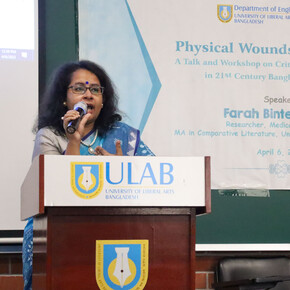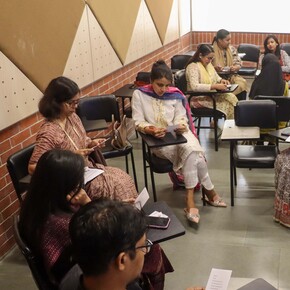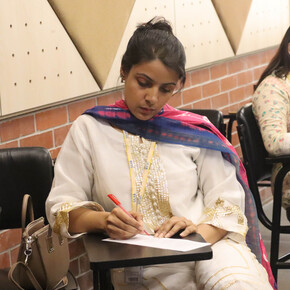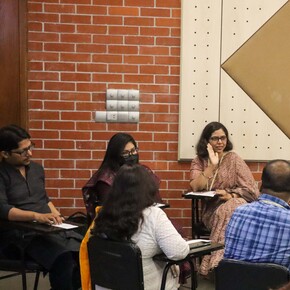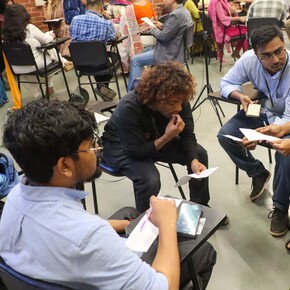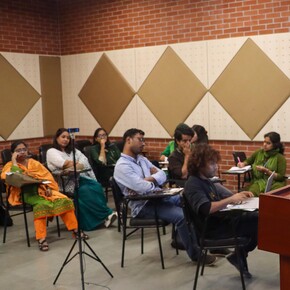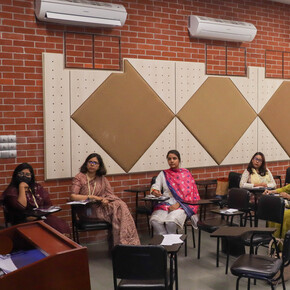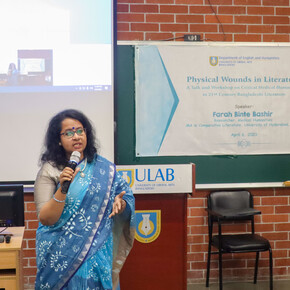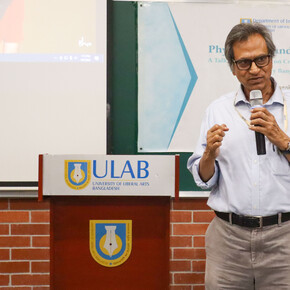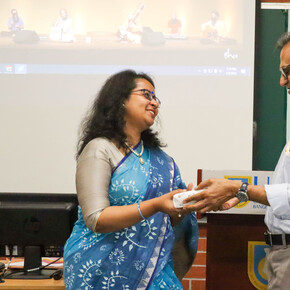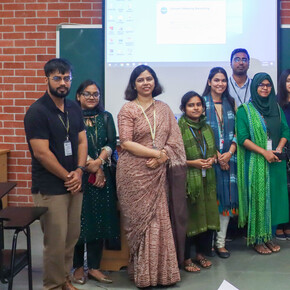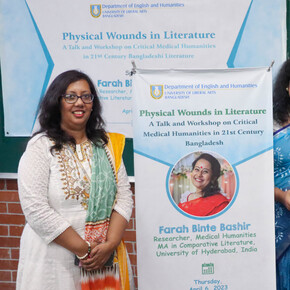Physical Wounds in Literature: A Talk and Workshop on Critical Medical Humanities in 21st Century Bangladesh
On Thursday, April 6, 2023, at its permanent campus in Mohammadpur, the Department of English and Humanities, ULAB, hosted a highly interactive workshop titled "Physical Wounds in Literature: A Talk and Workshop on Critical Medical Humanities in 21st Century Bangladesh." Farah Binte Bashir, a graduate student of comparative literature at the University of Hyderabad in India, facilitated the workshop.
Ms. Bashir began the session by inquiring about the participants’ perceptions of what medical humanities might be. Giving the example of a cockroach, she told the participants not to think of it as an insect arousing a feeling of disgust but rather to empathize with its existence, as Gregor Samsa did in The Metamorphosis. “From that empathy comes medical empathy,” she remarked. She described medical humanities as a field where the effects of music, frequency, paintings, etc. on the human brain as a therapeutic tool are studied, and art and literature are examined with an empathic eye. She illustrated how physical injuries affect psychological suffering in Manik Bandopadhyay’s Padma Nadir Majhi and Pragaitihashik.
In the second part of the workshop, Ms. Bashir talked about how literary studies in 21st-century Bangladesh have embraced medical humanities with disability studies, memory studies, nostalgia studies, and trauma studies. She then instructed the participants to divide into groups and identify disabilities, trauma, and traumatic amnesia in “Jonakir Basha,” a poem by Al Mahmud. Then she discussed Torko Shojjay Mrittu by Mahbub Mayukh Rishad as a consciously written medical humanities fiction.
The next part of the workshop was focused on the framing of medical humanities as a real model. To show this, she asked the participants who have chronic or autoimmune diseases to sit in a separate group. After that, she played several pieces of music at different frequencies: at 148 Hz, a pain relief instrumental and at 528 Hz, an anxiety relief instrumental, the sound of Isha, and two lyrics conveying “negative intervention” and “positive intervention.” She then advised the participants to close their eyes and connect with the music. Finally, she asked the participants to share their feedback on listening to the musical tunes and lyrics to which they responded positively.
The program was attended by Prof. Kaiser Haq, Dean, School of Arts and Humanities; Arifa Ghani Rahman, Head and Associate Professor of the department; Nadia Rahman, Assistant Professor, DEH; several other faculty members and students from the Department of English and Humanities, and the Department of Bangla Language and Literature, ULAB; and guests.
Report by Mst. Manjuma Ferdoushi -222055012

